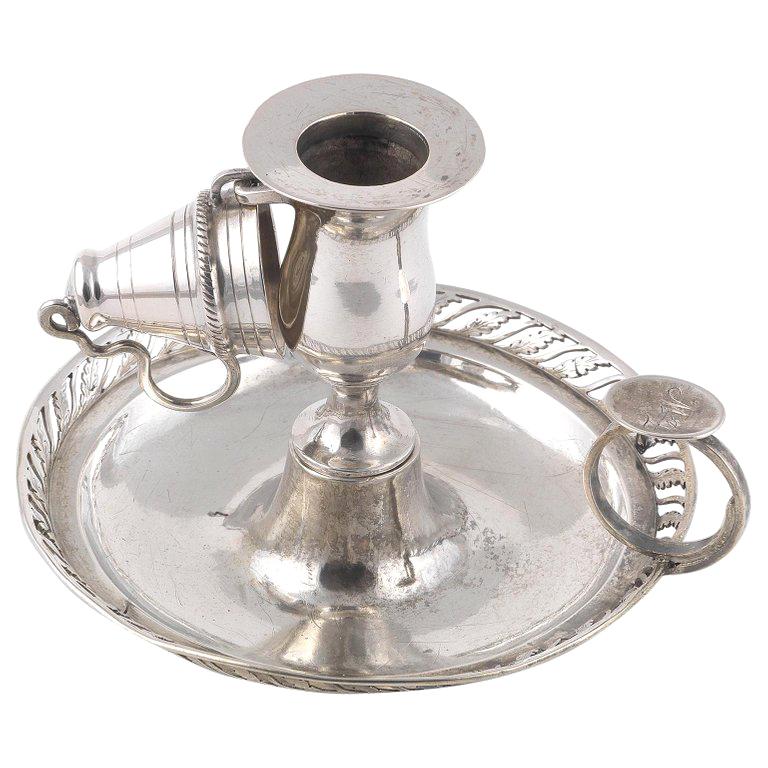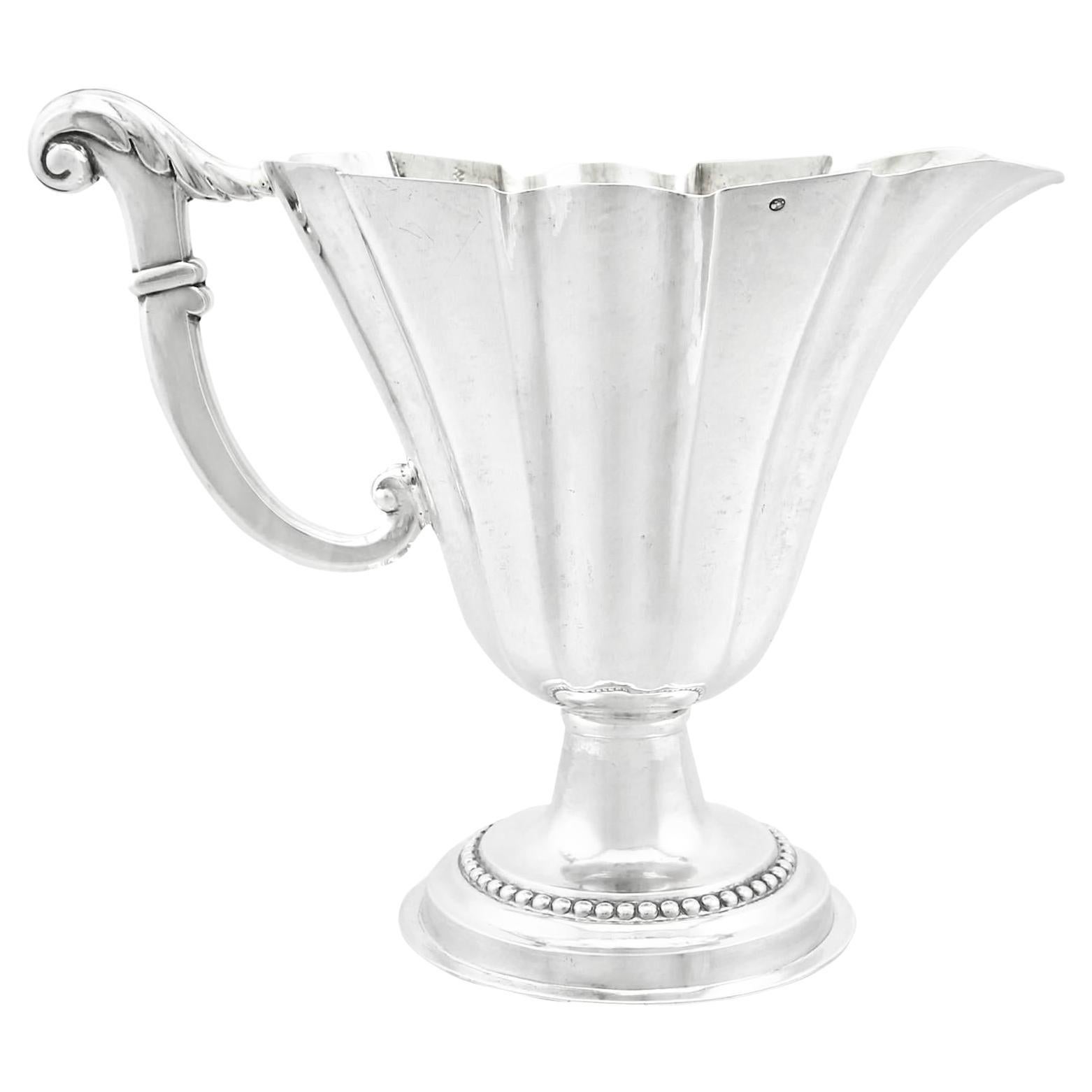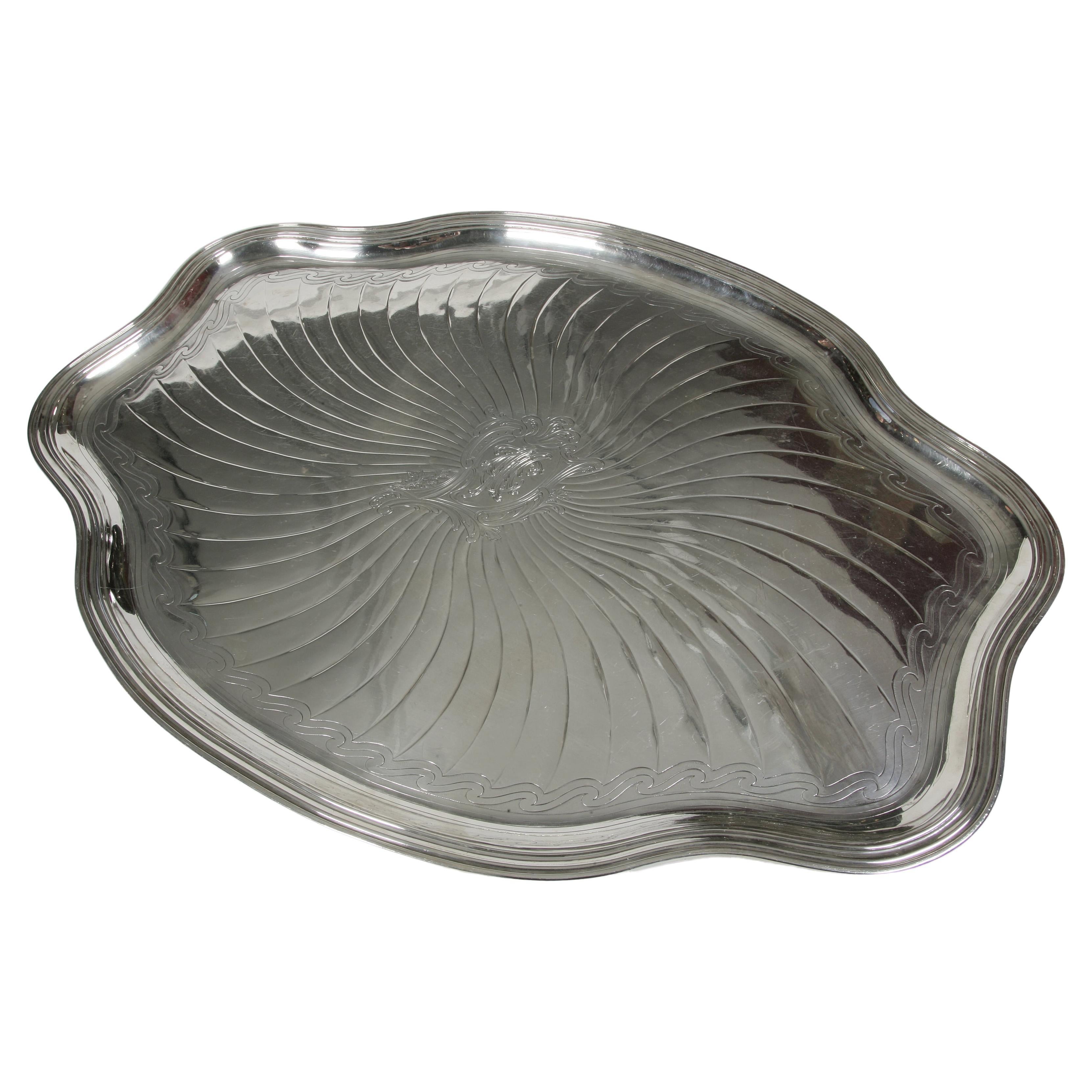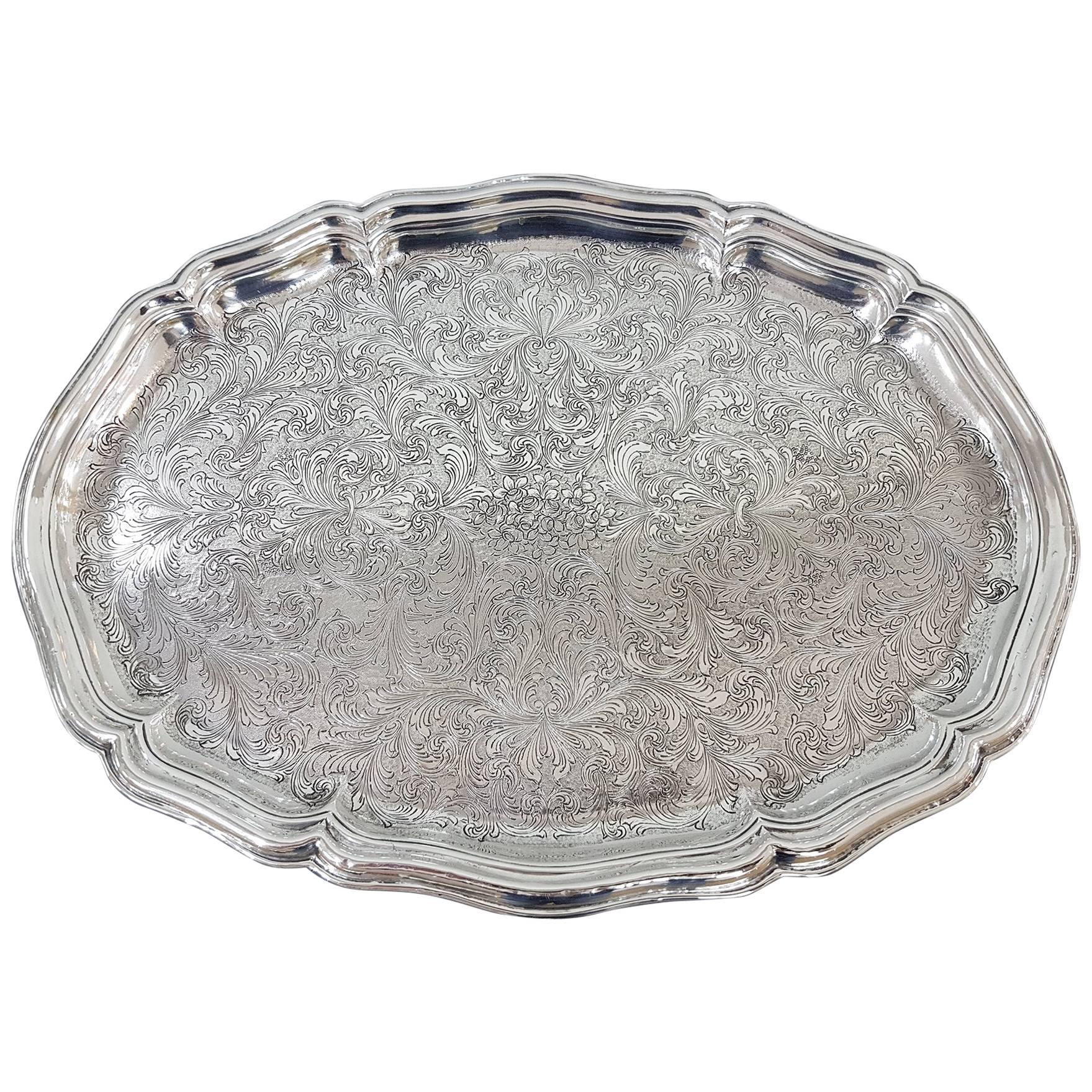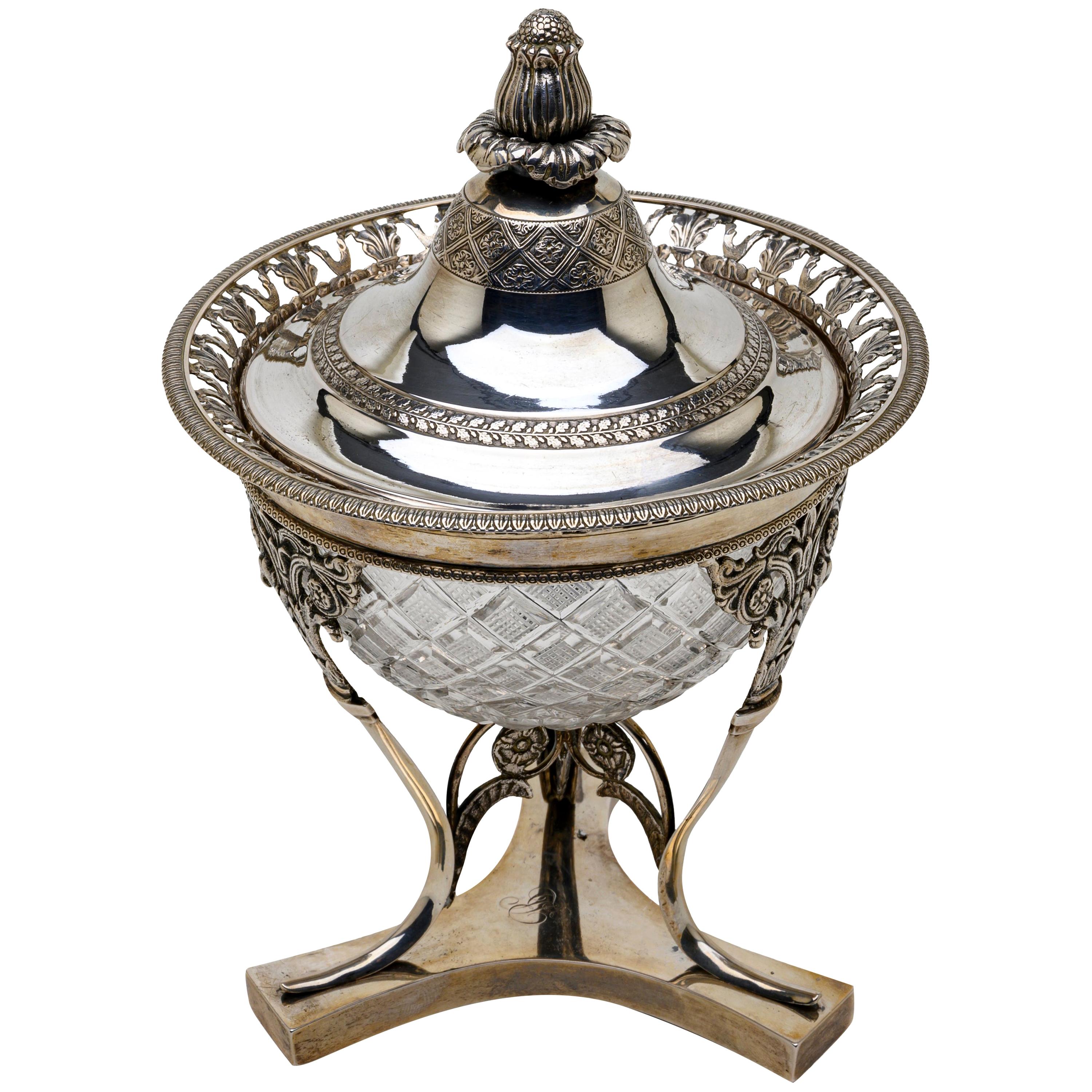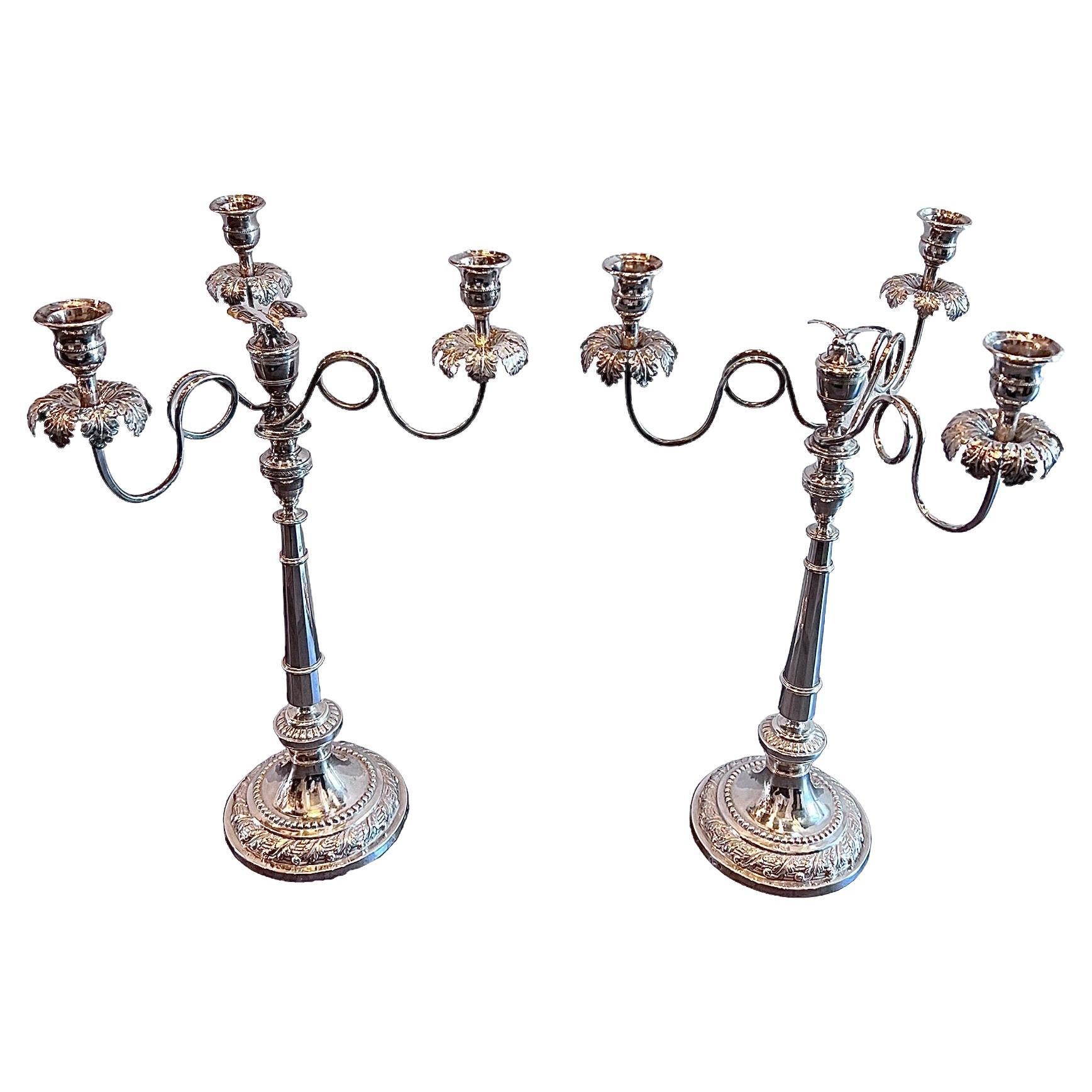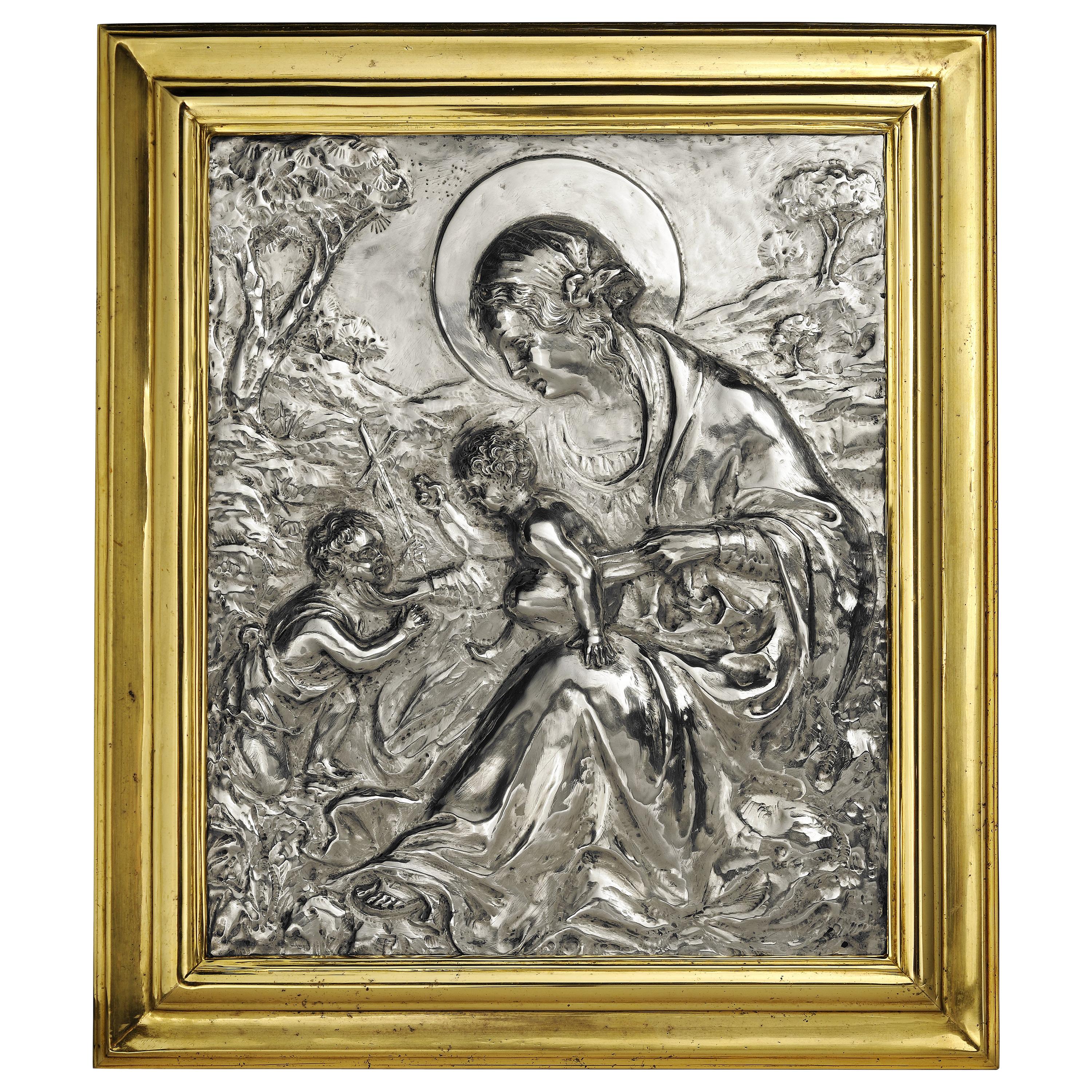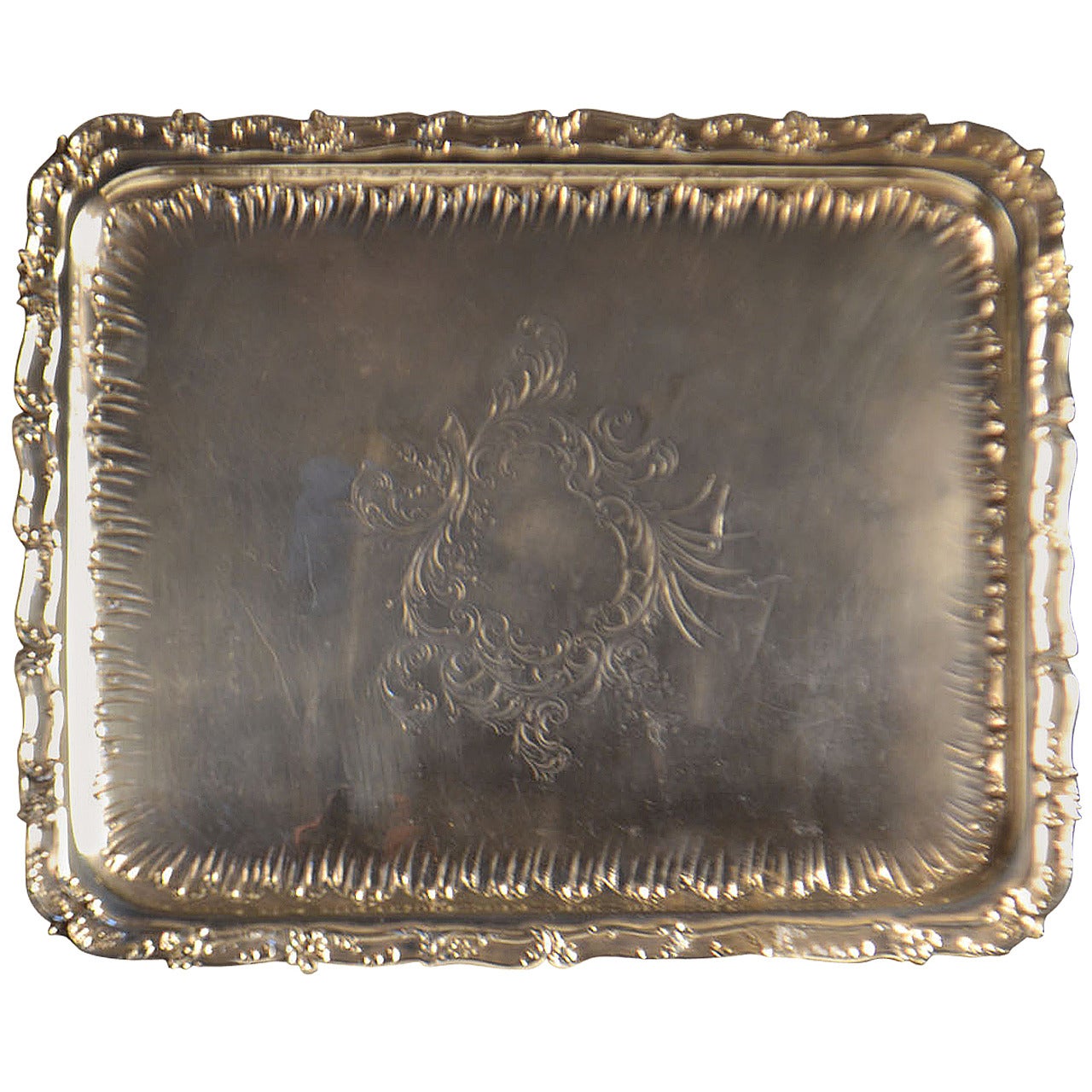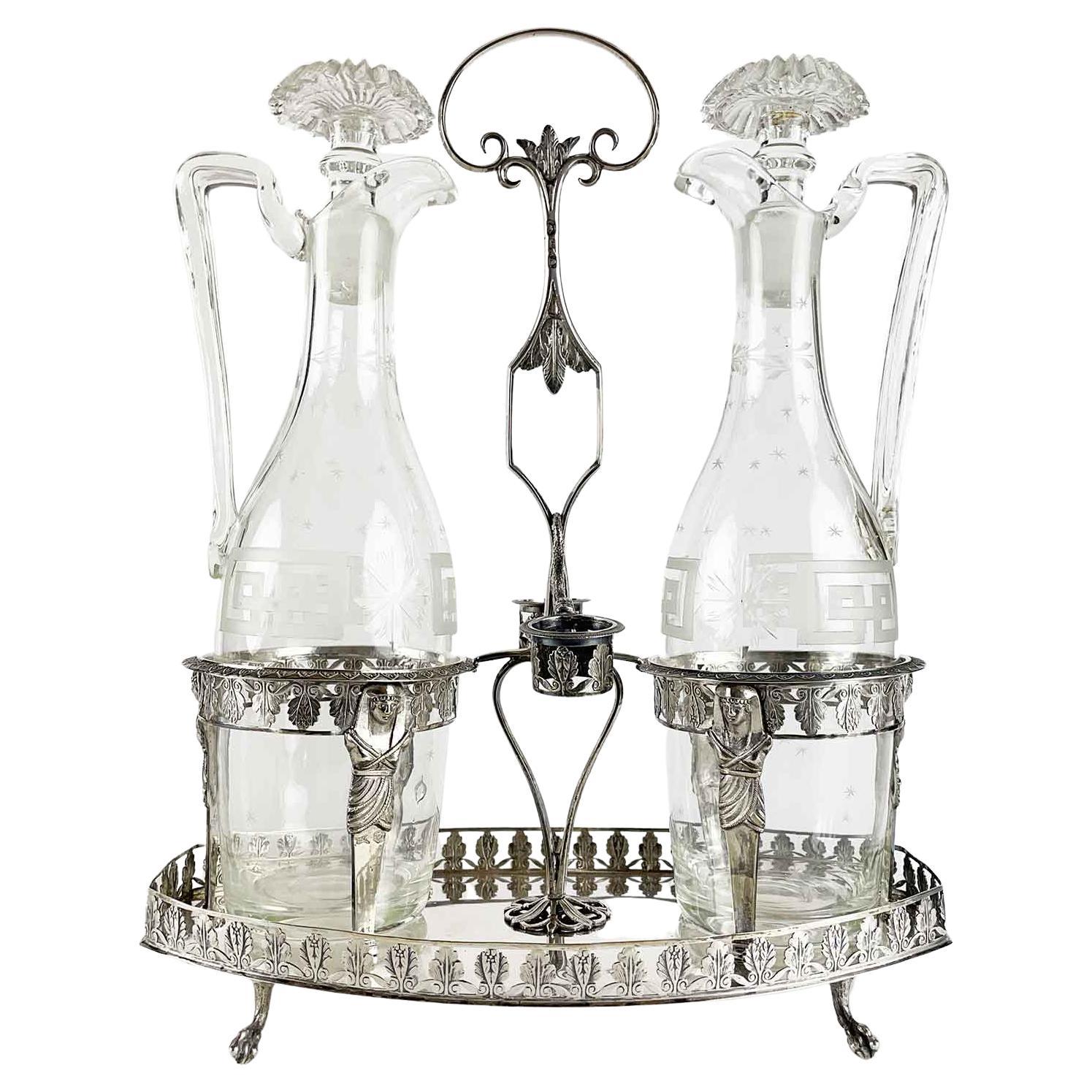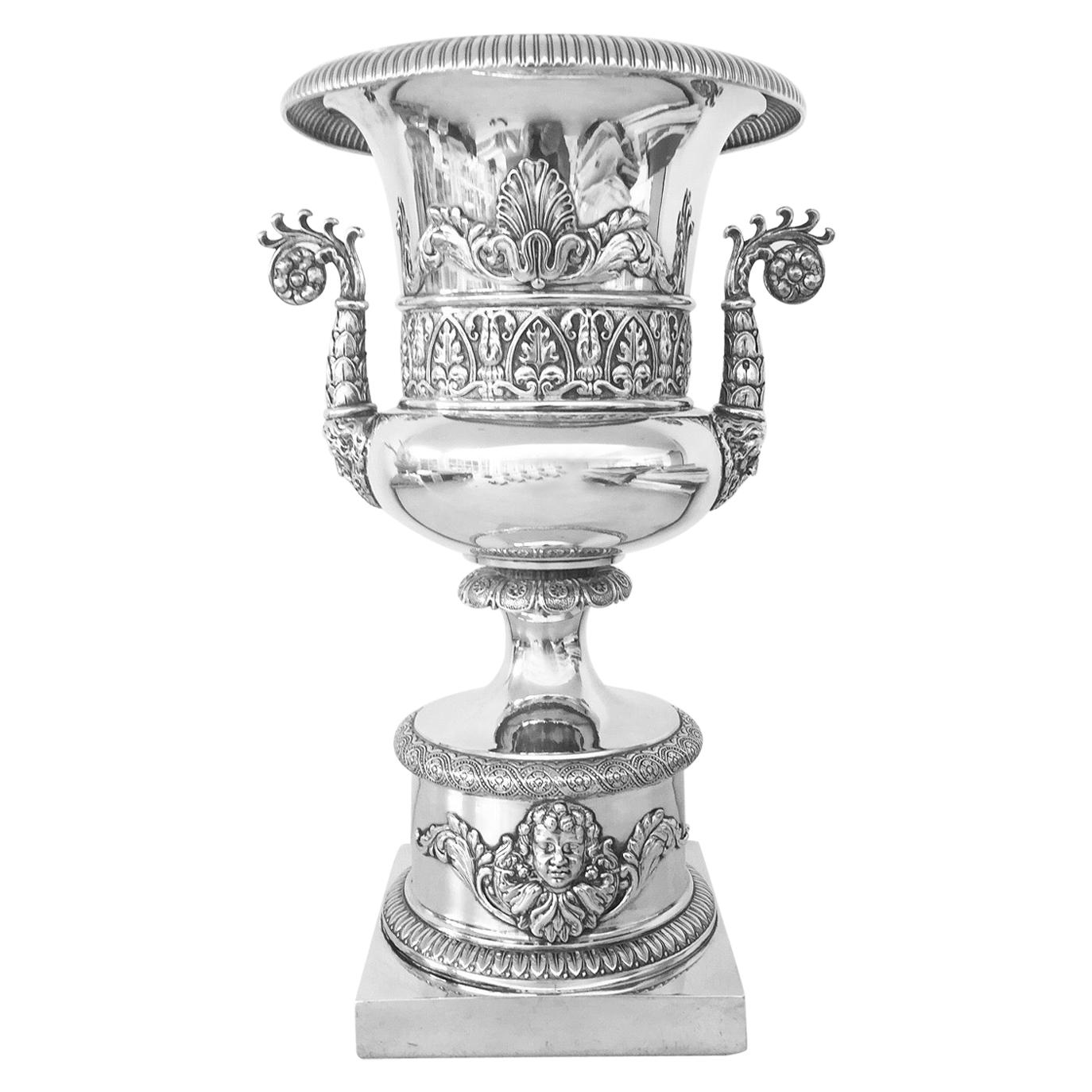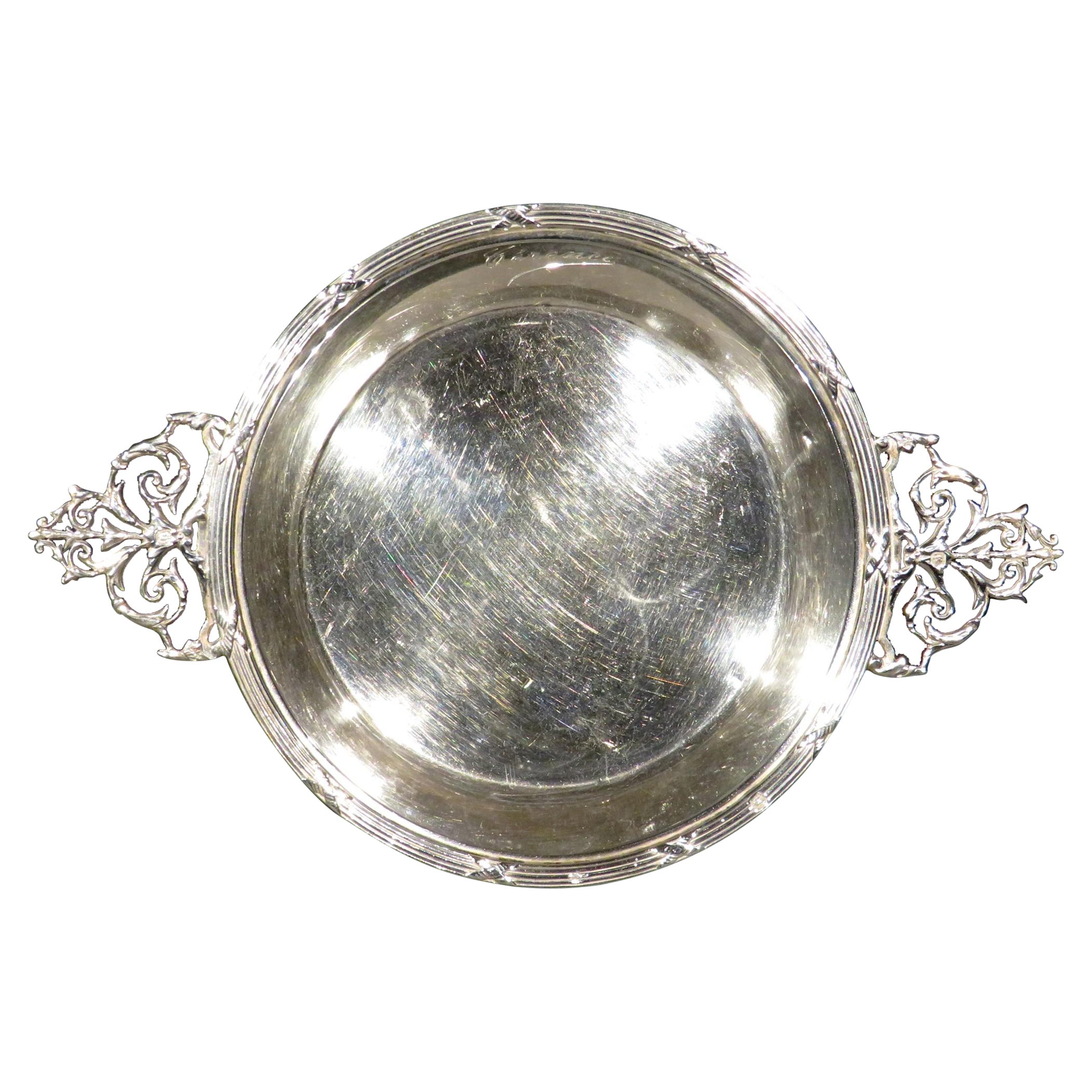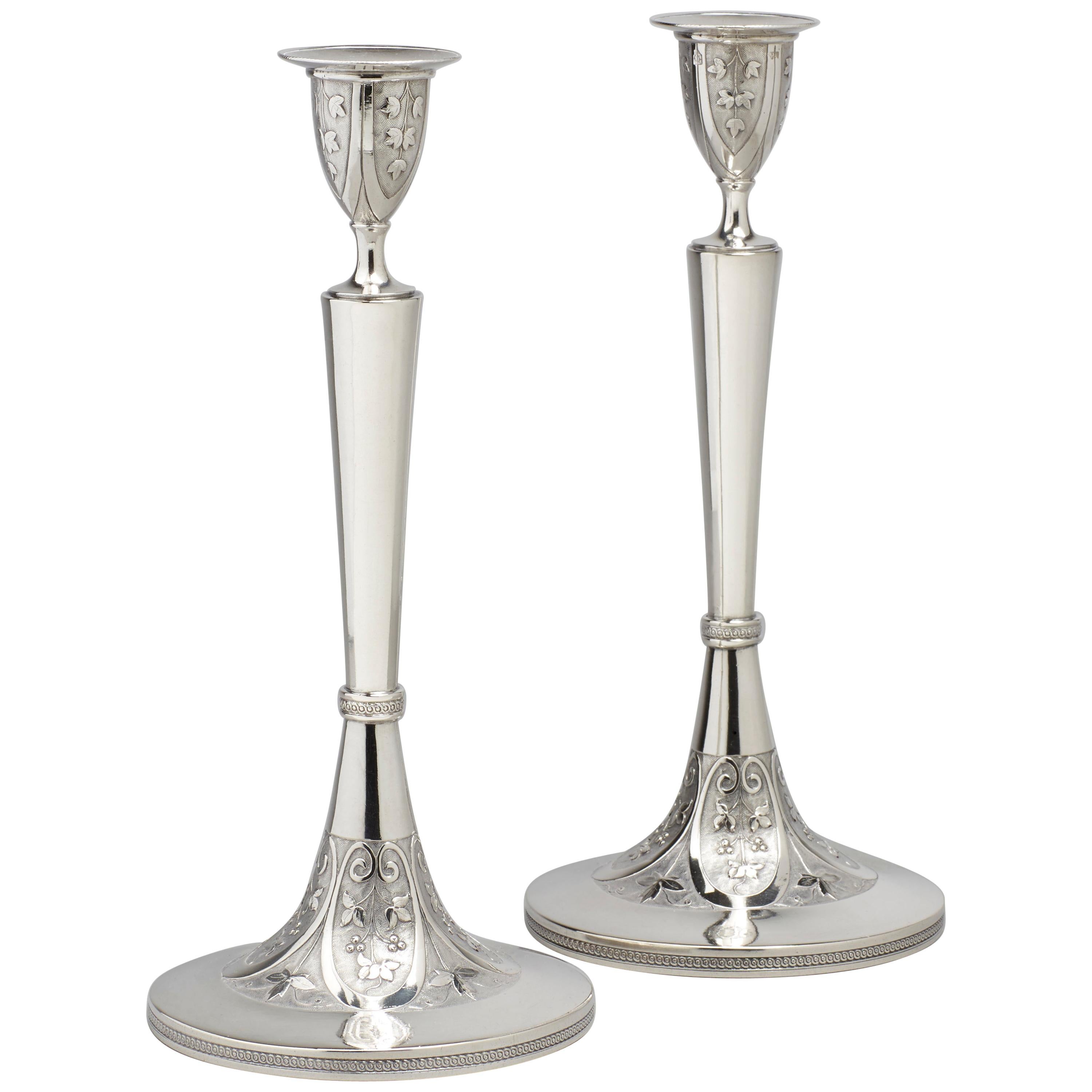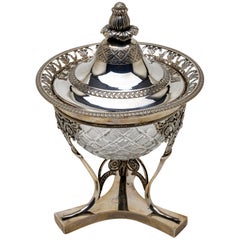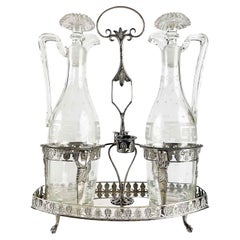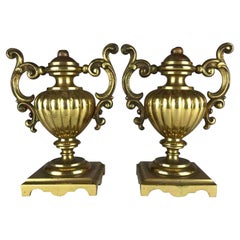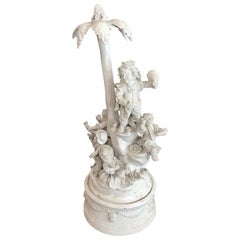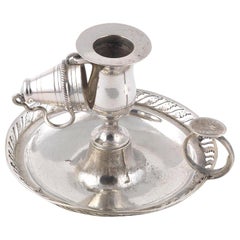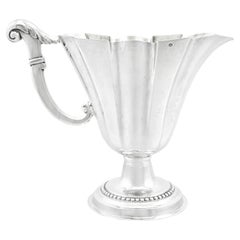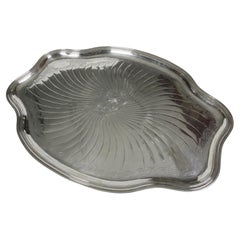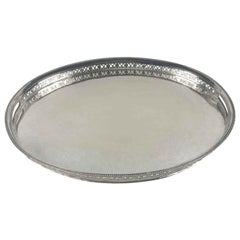
19th Century Italian Neoclassical Oval Silver Tray Venetian Origin circa 1820s
View Similar Items
Want more images or videos?
Request additional images or videos from the seller
1 of 14
19th Century Italian Neoclassical Oval Silver Tray Venetian Origin circa 1820s
About the Item
- Dimensions:Height: 1.19 in (3 cm)Width: 20.87 in (53 cm)Depth: 15.36 in (39 cm)
- Style:Neoclassical (Of the Period)
- Materials and Techniques:
- Place of Origin:
- Period:
- Date of Manufacture:circa 1820
- Condition:Repaired: Minor scratches and two minor restorations on the border. Wear consistent with age and use.
- Seller Location:Milano, IT
- Reference Number:Seller: A6731stDibs: LU2160323547042
About the Seller
5.0
Gold Seller
Premium sellers maintaining a 4.3+ rating and 24-hour response times
Established in 1990
1stDibs seller since 2016
180 sales on 1stDibs
Typical response time: 1 hour
Associations
International Confederation of Art and Antique Dealers' Associations
Authenticity Guarantee
In the unlikely event there’s an issue with an item’s authenticity, contact us within 1 year for a full refund. DetailsMoney-Back Guarantee
If your item is not as described, is damaged in transit, or does not arrive, contact us within 7 days for a full refund. Details24-Hour Cancellation
You have a 24-hour grace period in which to reconsider your purchase, with no questions asked.Vetted Professional Sellers
Our world-class sellers must adhere to strict standards for service and quality, maintaining the integrity of our listings.Price-Match Guarantee
If you find that a seller listed the same item for a lower price elsewhere, we’ll match it.Trusted Global Delivery
Our best-in-class carrier network provides specialized shipping options worldwide, including custom delivery.More From This Seller
View All19th Century Italian Neoclassical Silver and Crystal Compote with Cover
By Cristoforo Corbella
Located in Milano, MI
From Milan a 19th century Italian silver and crystal compote bowl in good condition from a private collection. This antique Neoclassical covered compote bowl has a very fine hand-chased vegetal decoration and engraving, a lovely cast engraved silver 800/000 finial and shows silver-maker’s mark for Cristoforo Corbella active in the first half of 19th century in Milan, contrada degli Orefici 3194.
This antique silver compote of supreme craftsmanship stands on a three-lobed pedestal base with B L monogram engraved in the central part, features tripod legs decorated with neoclassical motifs, scrolls, flowers, rosettes supporting a circular upper ring adorned with elegant acanthus leafed piercing.
Engraved crystal cup and a cover finely engraved with geometrical and vegetal pattern, surmounted by a cast gem finial.
The following marks can be seen on the bottom of the foot and the upper edge of the compote, (the original descriptions are reported, as they appear on the documents of the State Archive of Milan):
1) “Forma eptagona. Globo col Zodiaco ed i setti (sic) Trioni” Heptagon form. Globe with the Zodiac and the seven Trioni (seven stars of the Ursa Major) Mark of the Guarantee Office in use in the Napoleonic Kingdom of Italy from 1812 for works with a title of 800 thousandths.
2) "Aratro" Plow Mark of the Guarantee Office in use in the Napoleonic Kingdom of Italy from 1812.
3) "insegna della Luna Piena...
Category
Antique Mid-19th Century Italian Neoclassical Sterling Silver
Materials
Crystal, Silver
19th Century Italian Milanese Neoclassical Silver Oil and Vinegar Cruet Set
Located in Milano, MI
Antique Milanese silver oil cruet consisting of an oval tray supported by four cast zoomorphic paw shaped feet; the edge of the tray is a ribbon decorated by...
Category
Antique Mid-19th Century Italian Neoclassical Sterling Silver
Materials
Silver
Pair of Italian Neoclassical Gilt Bronze Urn Vases, circa 1820s
Located in Milano, MI
Pair of 19th Century Neoclassica gilded bronze urns from Italy. A pair of amphora shaped vases in mercury gilded and polished bronze. Very small cen...
Category
Antique Early 19th Century Italian Neoclassical Vases
Materials
Bronze
19th Century Italian Venetian Neoclassical White Figural Centerpiece Dwarfs
By Este Ceramiche
Located in Milano, MI
A charming and very decorative Italian white ceramic figurative circular centerpiece depicting a group of dwarfs around a palm tree, in a toasting festive attitude. This Italian anti...
Category
Antique Early 19th Century Italian Neoclassical Figurative Sculptures
Materials
Ceramic
Oliera Neoclassica Italiana in Argento Brescia 1820 circa Cestello con Ampolle
Located in Milano, MI
Oliera italiana in Argento di provenienza lombarda, della città di Brescia 1812/1872. Servizio da tavola, cestello ovale in argento contenente le ampolle dell'olio e dell'aceto. Su d...
Category
Antique Early 19th Century Italian Neoclassical Sterling Silver
Materials
Silver
19th Century Italian Neoclassical Mirror Ivory and Giltwood Overmantel
Located in Milano, MI
Italian antique ivory color painted and giltwood fireplace mirror, dating back to the mid-19th century. This elegant Neoclassical overmantel mirror...
Category
Antique Mid-19th Century Italian Neoclassical Mantel Mirrors and Firepla...
Materials
Wood
You May Also Like
Italian Silver Circular Chamberstick, 1820s
Located in Firenze, IT
SHIPPING POLICY:
No additional costs will be added to this order.
Shipping costs will be totally covered by the seller (customs duties included).
With a palmette, detachable scone ...
Category
Antique 1820s Italian Neoclassical Sterling Silver
Materials
Silver
Antique 1820s Italian Sterling Silver Jug
Located in Jesmond, Newcastle Upon Tyne
An exceptional, fine and impressive antique Italian silver sterling jug.
This exceptional antique Italian sterling silver jug has an oval paneled, flared form onto a circular domed foot.
The surface of this antique jug is plain and unembellished, with a matte, subtly planished finish in keeping with the patination of a piece from this period.
This impressive piece is fitted with an exceptional cast sterling silver scrolling handle, accented with a leaf design emanating from the thumbpiece, this leaf ornamentation comprises the upper terminal.
The circular foot is encircled with a band of embossed bead decoration.
This impressive antique silver jug has been independently tested using state of the art technology (Niton XL2 Analyzer) and verified as sterling standard silver (925/1000).
Patination or Patina is a subtle coloration or tarnish which forms on the surface of some metals, produced by oxidation or other chemical processes. A good patina proffers an aesthetically pleasing look.
Condition
This antique silver jug is a very good gauge of silver and exceptional quality for its type.
The jug is in exceptional presentation condition.
Italian hallmarks struck to the surface of the jug and rim of the foot are all very clear.
Reflections in photographs may detract from the true representation of this piece of antique Italian silverware...
Category
Antique 1820s Italian Pitchers
Materials
Sterling Silver
Goldsmith A. Aucoc - Sterling Silver Oval Tray 19th Century
By A. Aucoc
Located in SAINT-OUEN-SUR-SEINE, FR
Large oval scalloped platter in solid silver with a belt of strong threads radiating decoration, in the center a stylized cartridge with an interlaced "MC" monogram. Hammer mounted.
...
Category
Antique Late 19th Century French Napoleon III Sterling Silver
Materials
Sterling Silver
19th Century Italian Silver Oval Baroque Tray, Completely Engraved by Hand
Located in VALENZA, IT
Baroque oval silver tray. Made in Milan, Italy in the mid-19th century.
Completely hand engraved with scrolls and central flowers. The swirls and flo...
Category
Antique Mid-19th Century Italian Baroque Sterling Silver
Materials
Silver
$3,035 Sale Price
46% Off
Pair of 1820s Italian Touring Sterling Silver Candelabras
Located in North Miami, FL
Exquisite Pair of 1820s Italian Touring (Grand Tour) Sterling Silver Candelabras
Crafted by skilled artisans, these magnificent candelabras hailing from 1820s Italy are a testament ...
Category
Antique Early 19th Century Italian Grand Tour Sterling Silver
Materials
Sterling Silver
19th Century Italian Sterling Silver Madonna, circa 1830
Located in Milano, IT
Embossed and engraved silver plaque
La Madonna del lago (The Madonna of the Lake)
Probably Milan, post 1824
Brass frame
It measures 16.14 in x 13.85 in (41 x 35.2 cm) and it weighs 10.357 pounds (4.698 g): silver 1.31 pounds (598 g) + brass 9.03 pounds (4.100 g)
State of conservation: some abrasions on the bottom. The frame is old, but not original.
The plaque is made up of a sheet of embossed and engraved silver, and held in a solid brass frame. It depicts the “Madonna del lago” – “Madonna of the Lake” - (the Madonna with Child and San Giovannino) by Marco d'Oggiono (Oggiono, 1474 circa - Milan, 1524 circa), while changing only the background landscape. Almost certainly the subject reproduced in the plaque was taken from a famous engraving by Giuseppe Longhi (Monza, 1766 - Milan, 1831), one of the greatest engravers of his era.
The silver is unmarked, probably because originally the Madonna was due to be exposed in a church: sometimes precious metals destined for worship and liturgical use would be exempted from payment and were, therefore, not marked.
It is very likely that the plaque was made in Milan because in this city in 1824 the engraving by Giuseppe Longhi was made and printed. In addition, in Milan, the alleged lost painting by Leonardo da Vinci in his Milanese period (1482-1500) would be produced; this is the painting from which Marco d'Oggiono took his version.
The painting
Marco d?Oggiono was one of Leonardo da Vinci's most brilliant students and collaborators (D. Sedini, Marco d’Oggiono, tradizione e rinnovamento in Lombardia tra Quattrocento e Cinquecento, Roma 1989, pp. 151-153, n. 56; p. 225, n. 124, with previous bibliography). His style reflects in every way that of the Tuscan Maestro, so much so that he was the one who executed some copies of da Vinci's paintings. The execution of the “Madonna del Lago” probably draws inspiration from a lost painting by the Maestro, created while he was living in Milan (1482-1500). There are many similarities with other works by Leonardo such as the “Vergine delle rocce” or the “Vergine con il Bambino e San Giovannino, Sant’Anna e l’Agnello”.
The painting, from which the drawing and then the famous engraving were taken, is found today at the M&G Museum of Bob Jones University in Greenville, South Carolina, where it came to rest after the sale of the Harrington Collection in London in 1917.
The work appears in the inventories of the collection of Napoleon and Joséphine Bonaparte at the castle of Malmaison, before 1809.
The Malmaison building was born and developed in the 17th and 18th centuries. In the 18th century it belonged to Jacques-Jean Le Coulteux du Molay, a wealthy banker. Later, during the Directory, Joséphine Bonaparte de Beauharnais bought it on April 21st, 1799, but settled at the castle definitively only after her husband separated from her in 1809. She remained there until 1814, the year of her death. When Joséphine died, the estate passed to her son Eugène de Beauharnais, who moved to Munich with his whole family in 1815, bringing with him the collection of paintings he inherited from his mother. Eugène died in 1824 and his wife Augusta of Bavaria (von Bayern), unable to keep it, in 1828 sold the Malmaison to the Swedish banker Jonas-Philip Hagerman.
It is likely that in this period Augusta also sold part of the paintings inherited from her husband, including the “Madonna del Lago”. This painting then came into the possession of Leicester Stanhope, fifth Earl of Harrington (1784 - 1862) and then was passed down to his descendants.
In 1917, at the death of Charles, eighth Earl of Harrington, his brother Dudley inherited the title and properties and he put up a part of his collections for sale. Among these, precisely, the painting by Marco d'Oggiono was to be found.
On the occasion of that auction the painting was presented as a work by Cesare da Sesto, by virtue of a handwritten note by the Countess of Harrington on the back of the table. However, already in 1857, the German critic Gustav Waagen had identified Marco d'Oggiono as the author of the painting, then exhibited in the dining room of Harrington House in London (Treasures of Art in Great Britain, in 4 volumes, London, 1854 and 1857).
The engraving
Giuseppe Longhi was one of the most renowned engravers in Italy between the end of the 18th century and the first quarter of the 19th century.
In 1824 Giuseppe Longhi, based on a design by Paolo Caronni, made a famous engraving of the painting of Marco d?Oggiono. The activity of Longhi was then at the peak of his notoriety, enough to earn him very substantial commissions; it is not risky to suppose that some of his successful engravings were also reproduced using other means: in our case in silver. (A. Crespi, a cura di, Giuseppe Longhi 1766–1831 e Raffaello Morghen...
Category
Antique 1820s Italian Neoclassical Sterling Silver
Materials
Sterling Silver, Brass
